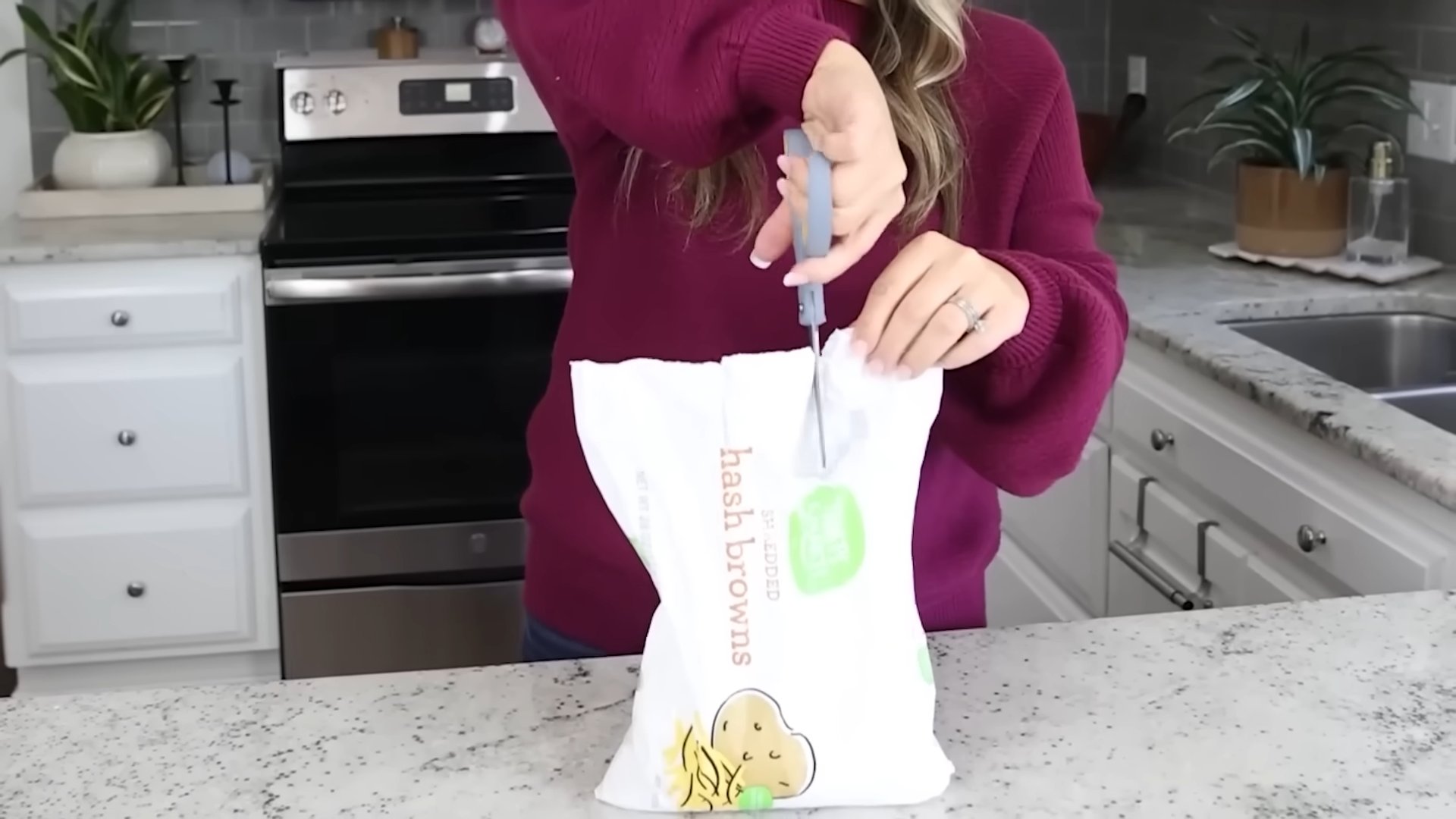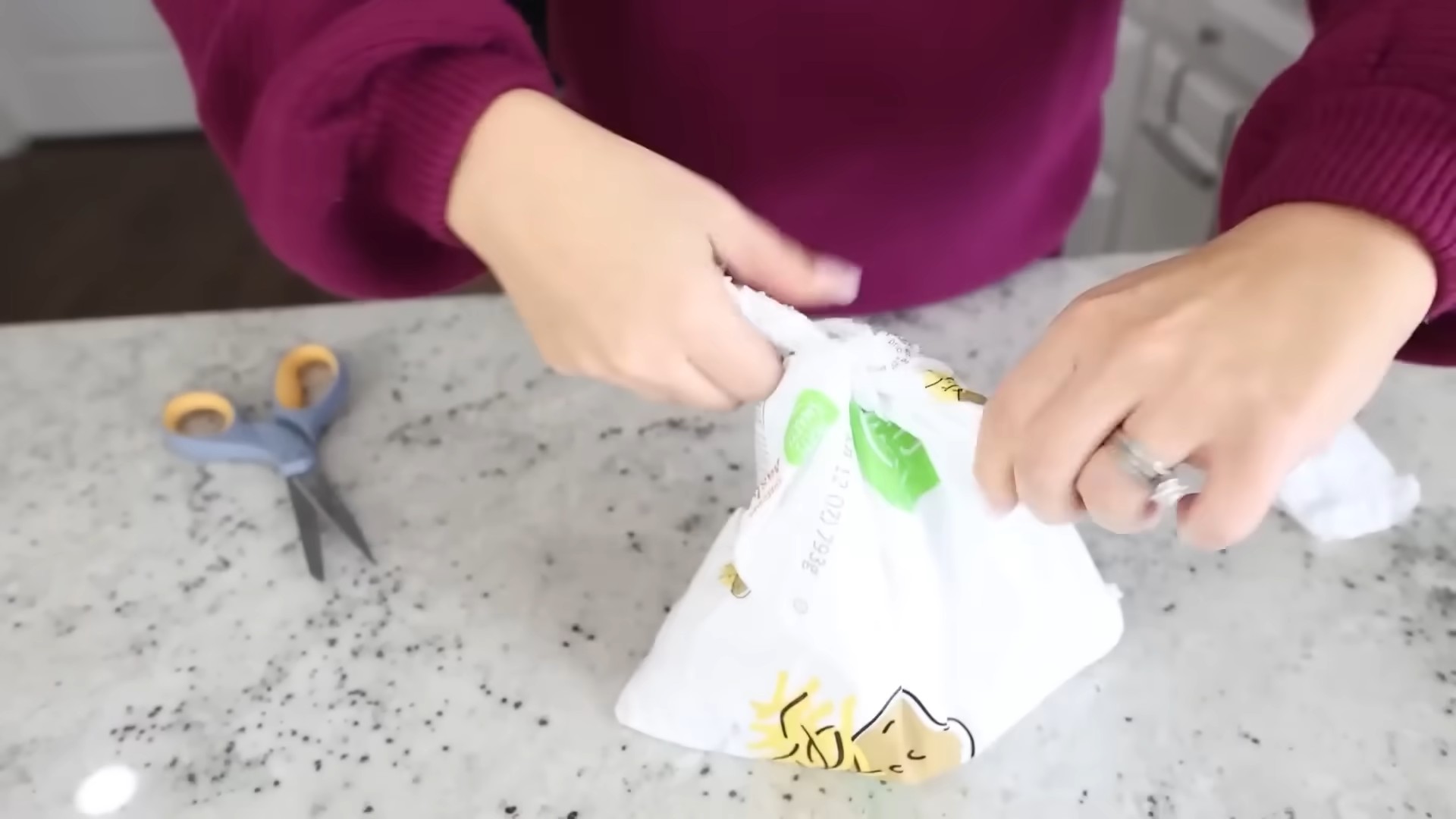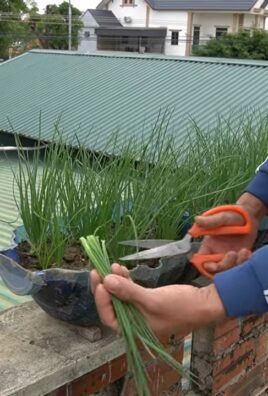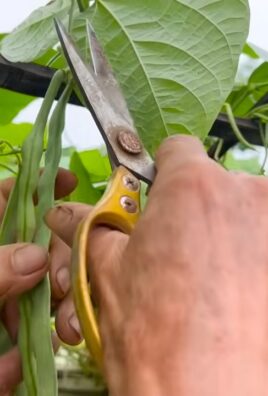Bag Tying Tricks: Are you tired of struggling with flimsy plastic bags that refuse to stay closed? Do your carefully stored snacks spill out, or your garden waste escapes its confines? I know I’ve been there! It’s a universal frustration, and that’s why I’m so excited to share some ingenious bag tying tricks that will revolutionize how you handle everything from kitchen scraps to precious garden harvests.
Throughout history, humans have sought clever ways to contain and transport goods. From ancient woven baskets to modern-day plastic bags, the need for secure closures has always been paramount. While the humble knot has served us well for centuries, these bag tying tricks offer a modern twist, providing enhanced security and ease of use.
Why do you need these bag tying tricks? Because life’s too short to wrestle with stubborn bags! These simple hacks will save you time, reduce waste, and keep your belongings neatly organized. Imagine effortlessly sealing your compost bag, preventing unpleasant odors and deterring pests. Or picture yourself confidently transporting delicate seedlings, knowing their soil is securely contained. With these bag tying tricks, you’ll gain a newfound mastery over everyday tasks, transforming a mundane chore into a satisfying accomplishment. Let’s dive in and discover the secrets to perfectly tied bags!

Master the Art of Bag Tying: Never Struggle Again!
Hey there, fellow DIY enthusiast! Are you tired of wrestling with stubborn plastic bags, struggling to get a secure knot, or dealing with bags that burst open at the worst possible moment? I know I was! That’s why I’ve compiled this ultimate guide to bag-tying tricks that will revolutionize your life. Seriously, these techniques are game-changers. Get ready to say goodbye to bag-tying frustration and hello to perfectly secured bags every time!
The Basic Overhand Knot: A Foundation for Success
Before we dive into the fancy stuff, let’s make sure we’re all on the same page with the fundamental overhand knot. It’s the bedrock of many bag-tying methods, so mastering it is crucial.
Why it’s important:
* It’s the simplest knot to learn.
* It provides a decent level of security for lighter items.
* It’s a great starting point for more complex knots.
How to tie it:
1. Gather the Bag Opening: First, gather the opening of your bag together. Try to squeeze out as much air as possible, especially if you’re dealing with food waste or anything that might decompose and create pressure.
2. Create a Loop: Hold the gathered opening and form a loop. Think of it like you’re about to tie a shoelace, but instead of two laces, you have the bag opening.
3. Pass the End Through the Loop: Take the end of the gathered opening and pass it through the loop you just created.
4. Tighten the Knot: Pull the end firmly to tighten the knot. Make sure it’s snug against the bag’s contents.
The Double Overhand Knot: Extra Security for Heavier Loads
Okay, now that we’ve got the basic overhand knot down, let’s amp it up a notch with the double overhand knot. This is my go-to for heavier items or anything I really don’t want spilling.
Why it’s better than the single:
* Provides significantly more security.
* Less likely to come undone under pressure.
* Ideal for heavier groceries or trash bags.
Step-by-step instructions:
1. Gather and Loop: Just like with the single overhand knot, start by gathering the bag opening and forming a loop.
2. Pass Through Twice: This is the key difference! Instead of passing the end through the loop once, pass it through *twice*. This creates an extra twist and significantly increases the knot’s holding power.
3. Tighten Securely: Pull the end firmly to tighten the knot. Make sure both loops are snug and secure. You should feel a noticeable difference in the knot’s tightness compared to the single overhand knot.
The Surgeon’s Knot: The Ultimate in Slip Prevention
This knot is a lifesaver when you’re dealing with slippery bags or materials that tend to loosen easily. It’s a bit more complex, but trust me, the extra effort is worth it.
Why it’s a must-know:
* Virtually eliminates slippage.
* Perfect for smooth plastic bags.
* Provides exceptional security even under stress.
Let’s break it down:
1. Form the Initial Loop: Gather the bag opening and create a loop, just like before.
2. Double Pass Through (First Time): Pass the end of the bag opening through the loop *twice*. This is similar to the double overhand knot, but we’re not done yet!
3. Tighten Gently: Gently tighten the knot, but don’t pull it completely tight yet. You want to maintain some slack for the next step.
4. Double Pass Through (Second Time): Now, pass the end of the bag opening through the loop *twice again*, in the same direction as before. You should now have four passes through the loop in total.
5. Tighten Firmly: Now, pull the end firmly to tighten the knot completely. The multiple passes create a significant amount of friction, preventing the knot from slipping even under considerable pressure.
The “Ear” Knot: Quick and Easy for Lightweight Items
This is my go-to for tying up small, lightweight bags like produce bags or snack bags. It’s super quick and easy, and it gets the job done without any fuss.
Why it’s great for convenience:
* Extremely fast to tie.
* Ideal for lightweight items.
* Requires minimal effort.
Here’s how to do it:
1. Twist the Opening: Gather the bag opening and twist it tightly. The tighter you twist, the more secure the knot will be.
2. Form a Loop: Bend the twisted portion into a loop, creating a small “ear.”
3. Tuck the End Through: Tuck the end of the twisted portion through the loop.
4. Tighten: Pull the end to tighten the knot. You can adjust the size of the “ear” to your liking.
The Bag Neck Sealing Method: For a Professional Look
This method is perfect for sealing bags of coffee, tea, or other dry goods. It creates a clean, professional-looking seal that keeps your items fresh.
Why it’s ideal for storage:
* Creates an airtight seal.
* Keeps food fresh for longer.
* Looks neat and professional.
Follow these steps:
1. Fold Down the Top: Fold down the top of the bag several times, creating a tight, flat surface.
2. Crease the Fold: Crease the fold sharply to create a crisp edge. This will help the seal stay in place.
3. Fold in the Corners: Fold in the corners of the folded-down portion, creating a triangular shape.
4. Tuck the Corners: Tuck the corners underneath the folded-down portion, creating a secure seal. You may need to use a bit of tape to hold the corners in place, especially if the bag material is slippery.
Using Twist Ties: A Simple and Effective Solution
Sometimes, the simplest solutions are the best. Twist ties are a classic for a reason – they’re quick, easy, and effective.
Why they’re a reliable choice:
* Reusable and convenient.
* Available in various sizes and colors.
* Ideal for sealing bags of bread, snacks, or produce.
How to use them effectively:
1. Gather the Opening: Gather the bag opening and squeeze out any excess air.
2. Wrap the Twist Tie: Wrap the twist tie around the gathered opening.
3. Twist Securely: Twist the ends of the twist tie together tightly. Make sure the twist tie is snug against the bag to create a secure seal.
Using Rubber Bands: Another Quick and Easy Option
Rubber bands are another readily available option for sealing bags. They’re not as secure as some of the other methods, but they’re great for temporary closures.
Why they’re good for temporary use:
* Easy to find and use.
* Suitable for quick closures.
* Can be reused multiple times.
Here’s how to use them:
1. Gather the Opening: Gather the bag opening and squeeze out any excess air.
2. Wrap the Rubber Band: Wrap the rubber band around the gathered opening several times.
3. Secure the Ends: Tuck the ends of the rubber band underneath the wrapped portion to secure it in place.
The “Bag within a Bag” Technique: For Double Protection
This technique is perfect for containing messy items or anything that might leak. It’s simple, but it provides an extra layer of protection.
Why it’s great for messy items:
* Provides double containment.
* Prevents leaks and spills.
* Ideal for trash bags or transporting liquids.
How to do it:
1. Place the Item in One Bag: Place the item you want to contain inside one bag.
2. Tie the First Bag: Tie the first bag securely using one of the knotting methods described above.
3. Place the First Bag in a Second Bag: Place the tied bag inside a second bag.
4. Tie the Second Bag: Tie the second bag securely. Now you have double the protection!
Heat Sealing: For a Permanent Closure (Requires a Heat Sealer)
If you’re serious about sealing bags, especially for long-term storage, a heat sealer is a worthwhile investment. It creates a permanent, airtight seal that will keep your items fresh for months or even years.
Why it’s the best for long-term storage:
* Creates an airtight and watertight seal.
* Prevents spoilage and contamination.
* Ideal for sealing food items for long

Conclusion
So, there you have it! Mastering these simple bag tying tricks isn’t just about aesthetics; it’s about efficiency, preservation, and reducing waste. Think about it: how many times have you struggled with a flimsy bread bag tie, only to have your loaf stale within a day? Or wrestled with a produce bag that refuses to stay closed, leading to wilted greens? These are everyday frustrations that can be easily solved with a little know-how.
These bag tying tricks are a game-changer for anyone looking to streamline their kitchen routine and minimize food waste. From the simple overhand knot that secures lightweight bags to the more intricate but incredibly effective miller’s knot for heavier loads, there’s a technique here for every situation. And the best part? They require no special tools or equipment – just your hands and a little practice.
Beyond the basic techniques, feel free to experiment and adapt these methods to suit your specific needs. For example, try using a small rubber band in conjunction with the overhand knot for extra security on slippery plastic bags. Or, if you’re dealing with a particularly large or bulky bag, consider using a twist tie in combination with the miller’s knot to create a super-secure closure. You can even color-code your bag ties using different colored rubber bands or twist ties to easily identify the contents of each bag in your freezer or pantry.
Don’t underestimate the power of a well-tied bag! It can make all the difference in keeping your food fresh, your pantry organized, and your life a little bit easier. We encourage you to try out these bag tying tricks and see for yourself how much of a difference they can make. Start with the overhand knot – it’s the easiest to master – and then gradually work your way up to the more complex techniques.
Once you’ve mastered these bag tying tricks, we’d love to hear about your experience! Share your tips, tricks, and variations in the comments below. Did you discover a new and improved way to tie a bag? Did you find a particular technique especially useful for a specific type of bag or food item? Your feedback will not only help other readers but also contribute to a growing community of bag-tying enthusiasts! So go ahead, give these tricks a try, and let us know what you think. You might be surprised at how much you enjoy the process – and how much it simplifies your life.
Frequently Asked Questions (FAQs)
What are the benefits of learning different bag tying tricks?
Learning various bag tying tricks offers a multitude of benefits. Primarily, it helps in preserving the freshness of food items by creating a secure seal that prevents air exposure. This is especially crucial for items like bread, chips, and produce. Secondly, it aids in organization, both in the kitchen and elsewhere. Neatly tied bags are easier to store and stack, saving space and reducing clutter. Furthermore, mastering these tricks can minimize waste by preventing spills and leaks, and by extending the shelf life of perishable goods. Finally, it’s a practical skill that can be applied in various situations, from packing lunches to organizing supplies.
Which bag tying trick is best for keeping bread fresh?
For keeping bread fresh, the miller’s knot is generally considered the most effective. Its secure and tight closure prevents air from entering the bag, which is the primary cause of bread going stale. However, if you don’t want to learn the miller’s knot, a tightly tied overhand knot, combined with a twist tie or rubber band for extra security, can also work well. The key is to ensure that the bag is tightly sealed and that there are no gaps for air to seep in. Storing the bread in a cool, dry place further enhances its freshness.
Can these bag tying tricks be used on different types of bags?
Yes, these bag tying tricks are versatile and can be adapted for use on various types of bags, including plastic produce bags, bread bags, freezer bags, and even garbage bags. The choice of technique depends on the bag’s material, size, and the weight of the contents. For lightweight bags, a simple overhand knot or a slip knot might suffice. For heavier or more valuable contents, the miller’s knot or a combination of a knot and a twist tie is recommended. Experimenting with different techniques will help you determine which works best for each type of bag.
Are there any tools needed to perform these bag tying tricks?
No, the beauty of these bag tying tricks is that they require no special tools or equipment. All you need are your hands and the bag itself. However, you can enhance the security and effectiveness of some techniques by using readily available items like twist ties, rubber bands, or clips. These can provide extra grip and prevent the bag from coming undone, especially when dealing with slippery or heavy contents.
How can I prevent my tied bags from coming undone?
Several factors can contribute to a bag coming undone, including the type of knot used, the material of the bag, and the weight of the contents. To prevent this, ensure that you are using the appropriate knot for the situation. For example, a simple overhand knot might not be sufficient for a heavy bag. In such cases, opt for a more secure knot like the miller’s knot or reinforce the overhand knot with a twist tie or rubber band. Also, make sure that the knot is tied tightly and that there is enough slack in the bag to prevent it from straining the knot.
What is the miller’s knot, and why is it so effective?
The miller’s knot is a type of knot that creates a very secure and tight closure, making it ideal for sealing bags containing heavy or valuable items. It’s particularly effective because it creates a loop that cinches down tightly on the bag’s opening, preventing it from slipping or coming undone. The knot’s design distributes the tension evenly, reducing the risk of the bag tearing or the knot loosening. While it may take a bit of practice to master, the miller’s knot is well worth the effort for its superior holding power.
Can these bag tying tricks help reduce food waste?
Absolutely! By creating a secure seal on bags containing food items, these bag tying tricks help to preserve freshness and prevent spoilage. This is especially important for perishable goods like bread, produce, and snacks. When food stays fresh longer, it’s less likely to be thrown away, which directly contributes to reducing food waste. Additionally, properly tied bags prevent spills and leaks, which can also lead to food waste and messes.
How do I learn the miller’s knot?
The best way to learn the miller’s knot is through visual aids and practice. There are numerous online tutorials and videos that demonstrate the step-by-step process of tying the knot. Start by watching a few different tutorials to get a clear understanding of the technique. Then, practice the knot with a piece of rope or string until you feel comfortable with the steps. Once you’ve mastered the basic technique, try tying the knot on different types of bags to get a feel for how it works in various situations. Remember, practice makes perfect!
Are there any safety precautions I should take when tying bags?
While bag tying is generally a safe activity, there are a few precautions to keep in mind. Avoid using excessive force when tightening knots, as this can cause the bag to tear or the knot to snap. Be mindful of sharp edges or corners on the bag that could cut your fingers. If you are using a knife or scissors to trim excess bag material, exercise caution and use a cutting board to protect your work surface. Finally, keep small items like twist ties and rubber bands out of reach of children and pets to prevent choking hazards.





Leave a Comment